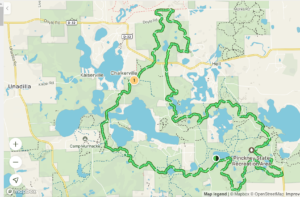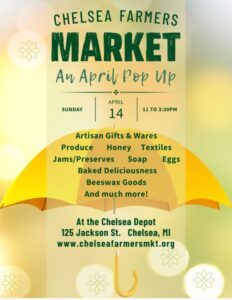By Jennifer Fairfield, owner of the Garden Mill
I’m starting a new feature this month in response to the myriad requests for recommendations that I get.
People often ask me what I use for certain tasks in my yard or garden, and I am happy to share that information. But it occurs to me that if there is one person asking, there are probably others who might be interested in the answers. So each month, I will highlight a product that I find useful.
If there are products you use that you think others might be interested in hearing about, please let me know – I’m happy to share your experiences as well. I hope you find this new feature helpful.
Garden Trug
In case you aren’t familiar with them, garden trugs are made of frost-resistant polyethylene (a sort-of rubbery material), that is really tough, and very pliable. According to the manufacturer, the garden trug “is the Earth’s most multi-use bucket.”
I guess I would have to agree with that statement, but I don’t think that makes it very clear. I have to say that it is the thing I use most in my yard, beyond all other tools – and trust me, I use a lot of tools. The reason I use these more than anything else is because they can be used for so many purposes. That’s also the reason I have so many of them. At last count, I think I had five. Each one is in use in some fashion almost all the time – summer, fall, winter, and spring.
In the spring, summer, and fall, they can often be found being dragged along with me as I weed out my flower and vegetable beds. They also come in handy for moving soil around when I’m putting in new plants, for watering newly planted things, for transporting plants from one spot to another, and for transporting my other tools from one job to another in the yard. I hear they also make great buckets for holding cold drinks during parties, though mine are always full of other things, so they never get used for that.
In the winter, I use them to corral all of my watering tools – hand-held sprayers, watering wands, hose splitters, timers, etc. I like being able to find all those things come spring, so I spend a day in late fall gathering them all up and putting them into one trug in the garage.
Another trug will get all my hand tools dropped into it at the end of the season, and still another will be where I stash things like twine, tomato clips, and garden markers. A large trug is great for hauling wood into the house for winter fires, too. I honestly don’t know how anyone gets through life without at least one of these things. Or five.
Garden trugs come in many sizes, though I find the larger, 11-gallon ones to be most useful. Oh – and they come in lots of great colors.
September
September is a great time for planting perennials, trees, and shrubs. Cool weather vegetables get a second season now, and if you want a nicer lawn in the spring, now is the time to work on that. In other words, September is a great month for gardening.
In the vegetable garden:
If you haven’t already, plant some leaf lettuce, spinach, and radishes now. You can extend your garden season a great deal with these plants – since they are quick to mature, they will be ready to pick before we get much frost.
 But speaking of frost, make sure you have row covers handy as we head into October. It’s also not unheard of for us to see a light frost or two before the end of the month, especially for those of us who live outside of town, and row covers can mean the difference between enjoying those last-minute veggies and losing them.
But speaking of frost, make sure you have row covers handy as we head into October. It’s also not unheard of for us to see a light frost or two before the end of the month, especially for those of us who live outside of town, and row covers can mean the difference between enjoying those last-minute veggies and losing them.
In Michigan, the best garlic gets planted in the fall for harvest the following summer. Our planting garlic is due to arrive in about a week. They can be planted any time up until the ground freezes, but are best planted after a few frosts. If you’ve never grown your own and are thinking about it this year, come talk to me – I’m happy to give you lots of tips garnered over the many years of growing my own.
I also have the basics in a printed form to take home. I highly recommend giving it a try – it’s really quite easy and you get to try varieties you’ll never find in stores. In case you haven’t heard me say so, I love home-grown garlic. I grow my own every year, and get cranky when I inevitably run out by mid- to late-winter and have to resort to grocery store garlic – it just isn’t anywhere near as good.
Pinch off any new flowers on tomatoes, peppers, and eggplants.
Flowers that are forming now are not going to have time to mature before we get our first frosts, and leaving them on means that your plants are spending unnecessary energy on growing those, when they really should be using all their energy to mature and ripen the fruit that is already there. If you have very small fruits on these plants, you might want to remove those as well, as the much cooler temperatures will mean those aren’t going to mature very quickly, and may not get big enough to bother with before frost hits.
Pull any plants that have finished producing and compost them – but don’t compost diseased plants. Our winters are generally too cold for compost piles to get warm enough to kill off diseases, and if you use the compost in your garden, you risk contaminating your soil, and therefore next year’s plants.
You may find that, with the cooler temps, your summer squashes, cucumbers, and beans slow down production. This doesn’t necessarily mean they are done, but unless we get some significantly warmer temps, they will definitely not be providing as much.
Don’t stop spraying your tomatoes, cucumbers, and squash with fungicide. I’ve also been spraying my pole beans, as they came down with halo blight pretty early in the season. This is a disease that is usually in the seeds, so there wasn’t much I could have done to prevent it, and the only thing that can possibly help to extend the production is a copper fungicide.
 So, my beans have been getting sprayed with that all season. I haven’t gotten as many beans from my pole beans this year as I usually do because of the disease, but my bush beans made up for that. I will need to make sure I plant any variety of beans in a different part of the garden for a few years, to allow the disease to die out. Once a disease has been introduced to the soil, it will stick around for a few years – or longer, if you keep planting the crop in the same area. The disease needs that particular plant (or a relative) to thrive, so not planting the same thing in the same area for a few years will generally cause it to die off.
So, my beans have been getting sprayed with that all season. I haven’t gotten as many beans from my pole beans this year as I usually do because of the disease, but my bush beans made up for that. I will need to make sure I plant any variety of beans in a different part of the garden for a few years, to allow the disease to die out. Once a disease has been introduced to the soil, it will stick around for a few years – or longer, if you keep planting the crop in the same area. The disease needs that particular plant (or a relative) to thrive, so not planting the same thing in the same area for a few years will generally cause it to die off.
If you have basil in your garden, you might want to get it picked and used, or turned into pesto and frozen pretty soon. The nighttime temperatures have already dipped below 50 a few times at my house.
Basil is a truly warm-weather plant, and really doesn’t like temperatures below 50 – it gets ugly black spots when that happens, which is actually tissue death. You can use row covers to help keep the temperature around your plants a few degrees warmer, but as we get further into the month, even that won’t help enough. You can dry basil, but it doesn’t freeze well, unless you make it into pesto first. In case you need one, here’s a good recipe, along with instructions for freezing pesto
Most other herbs in your garden will last a while yet, but you can also pretty easily dry those any time, and freezing most herbs is also an option. To freeze, simply wash and dry them thoroughly, then chop and put into zipper bags, squeezing out all the air before putting them into the freezer.
(Part two will publish tomorrow.)












